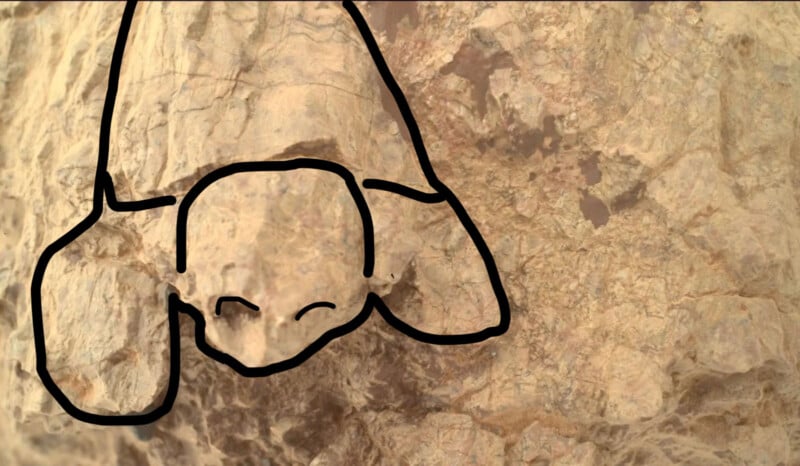NASA Perseverance Rover Photographs Rock on Mars That Looks Like a Turtle
![]()
NASA’s Mars Perseverance Rover has been exploring Jezero Crater on Mars since it landed on the planet on February 18, 2021. Since then, it has made many remarkable discoveries and captured hundreds of thousands of incredible photos. A recent photo shows a close-up of a Martian rock, it looks a lot like a turtle.
As Space.com writes, a photo Perseverance captured on August 31, the 1,610th Martian day of its mission, looks like the front half of a turtle, complete with its “head” poking out of its “shell,” with a couple of front appendages. To my eyes, it looks like a sea turtle.

The Perseverance rover has 23 total cameras, although seven of them were designed for entry, descent, and landing operations in early 2021. The remaining 16 perform vital navigational, engineering, and scientific tasks, including the Mastcam-Z cameras that the rover uses to capture many of its most famous photos.
However, in the case of the new “turtle rock” photo, Perseverance used its SHERLOC (WATSON) instrument. SHERLOC, which stands for “Scanning Habitable Environments with Raman and Luminescence for Organics and Chemicals,” is affixed to the rover’s robotic turret arm. SHERLOC works alongside WATSON, or the “Wide Angle Topographic Sensor for Operations and eNgineering.” WATSON is a high-resolution camera that photographs topographic targets that SHERLOC washes in ultraviolet light.
As NASA demonstrated back in May 2021 with the animation shown below, WATSON has some serious resolving power. The camera can capture images with a resolution of 14 micrometers per pixel, allowing scientists to obtain very detailed views of Mars’ fascinating rocks and soil.
![]()
This is far from the first time the Perseverance rover has captured photos of intriguing rocks. Last year, the rover captured an incredibly clear image of the Martian landscape that showed vibrant blue rocks, raising interesting questions concerning the Red Planet’s complex geological history.
Earlier this year, Perseverance snapped a photo of what looked like a skull on Mars, which, while not an actual skull, is an exciting mix of different rock types.
Just last month, another NASA rover on Mars, Curiosity, captured photos of coral-like rocks on the planet’s surface inside Gale Crater.
Mars has a lot of incredible rocks, and as it turns out, some of them even look like reptiles.
Image credits: NASA / JPL-Caltech